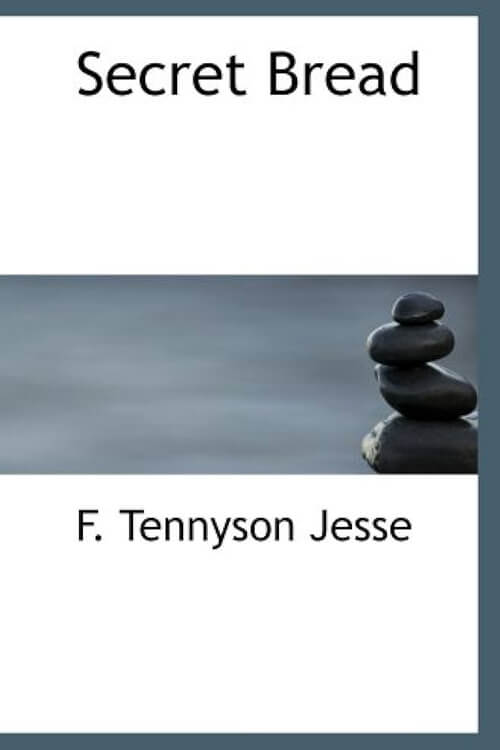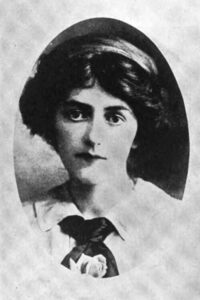
Secret Bread
A bullet-headed little boy of eight sat astride upon a farmyard gate, whistling and beating time with a hazel switch. He had fastened his belt around the gatepost and was using it as a bridle, his bare knees gripped the wooden bar under him, and his little brass-tipped heels flashed in the sun like spurs. It was Saturday morning, which meant no lessons with Parson Boase at the vicarage, and a fine day in late August, which meant escape from the roof of Cloom and the tongue and hand of its mistress. Ishmael Ruan, his head stuffed with the myths and histories with which the Parson was preparing him for St. Renny Grammar School, felt in the mood for high adventures, and his surroundings were romantic enough to stir the blood.
Cloom Manor, a deep-roofed, heavy-mullioned pile of grey granite dating from the Restoration, presented a long, low front to the moorland, a front beautified by a pillared porch with the Ruan’s arms sculptured above it, and at the back it was built round a square court, from which an arch, hollowed through the house itself, led into the farmyard. The windows were low-browed and deep-set, thickly leaded into small squares, with an occasional pane of bottle glass, which winked like an eye rounded by amaze. Within, the wide fireplaces and ceilings were enriched by delicate moldings, whose once clean-cut outlines were blurred to a pleasing, uncertain quality by successive coats of whitewash. The room where Ishmael had been born boasted a domed ceiling and a band of molding halfway up the walls culminated over the bed’s head in a representation of the Crucifixion—the drooping Christ surrounded by a medley of soldiers and horses, curiously intent dogs and swooning women, above whose heads the fluttered angels seemed entangled in the host of pennons flaunting round the cross. Cloom was a house of neglected glories, of fine things fallen on base uses, like the family itself. When James Ruan came into his inheritance it was still a gentleman’s estate; when he died it was a mere farm. A distorted habit of mind and the incredible difficulties of communication in the remote West during the first half of the nineteenth century had gradually caused James Ruan to sink his gentlehood in a wilful boorishness that left him a fierce pride of race and almost feudal powers, but the tastes and habits of his laborers. As for the life of his mind, it was concentrated entirely on money-making; and all that he made he invested, till he became the most important landowner for miles, and in a district where no farms were very large his manor lands and cottage property and his nine hundred pounds or so of income made him a figure not to be ignored.
Read or download Book
F. Tennyson Jesse
Fryniwyd Tennyson Jesse Harwood (born Wynifried (Winifred) Margaret Jesse; 1 March 1888 – 6 August 1958) was an English criminologist, journalist, and author (she also wrote as Wynifried Margaret Tennyson).
Early life and marriage
Fryniwyd was the second of three daughters of the Reverend Eustace Tennyson D’Eyncourt Jesse (1853-1928) and Edith Louisa James (1866-1941), and a great-niece of the poet Alfred, Lord Tennyson. Her older sister, Stella Mary Jesse (1887-1942) was also an author, best remembered for her novel Eve in Egypt (1929). Her younger sister, Edith Mary Ermyntrude was born in 1890 but died in infancy. Fryniwyd married Harold Marsh Harwood (1874–1959), a businessman and theatre manager, in September 1918. “Fryn” is a self-made contraction of “Wynifried”.
Books
Her most notable books include A Pin to See the Peepshow (London, W. Heinemann Ltd, 1934; Virago Modern Classics; British Library Women Writers), a fictional treatment of the case of Edith Thompson and Frederick Bywaters, and Murder & Its Motives (Heinemann, 1924), which divided killers into six categories based on their motivations: those who murder for Gain, Revenge, Elimination, Jealousy, Conviction and Lust of killing. This classification of motive has remained influential.
She contributed many cases to the Notable British Trials series, such as the trial of serial killer John Christie and the controversy surrounding the hanging of his neighbor, Timothy Evans. Her summary of the two trials is extensive, and concludes that Christie was probably the murderer of both Beryl and Geraldine Evans and that Timothy Evans was innocent of their deaths (Evans was hanged for the murder of his daughter Geraldine, and posthumously pardoned).
She also wrote the neglected classic, The Lacquer Lady (1929), which recounts the true story of how European maid of honor Fanny Moroni helped bring about the fall of the Burmese Royal Family at the end of the nineteenth century.
She reported on the German attacks on Belgium in the First World War for Collier’s Weekly. Her story Treasure Trove tells of the rediscovery in modern times of the 30 pieces of silver paid to Judas to betray Jesus Christ and their subsequent malign influence. The novel Tom Fool (Heinemann, 1926) deals with a young man’s experiences on sailing ships, and describes shipboard life in some detail.
The novel Moonraker (Heinemann, 1927) appears to be a typical romantic adventure, but in his 1981 introduction, Bob Leeson states that it contains both an embodiment of a woman’s rebellion and a cry for freedom for black people. The short story The Mask is collected in Alfred Hitchcock Presents: A Baker’s Dozen of Suspense Stories (Dell, 1963).
She also wrote and edited The Baffle Book, A Parlour Game of Mystery and Detection (1930), a crime puzzle.






